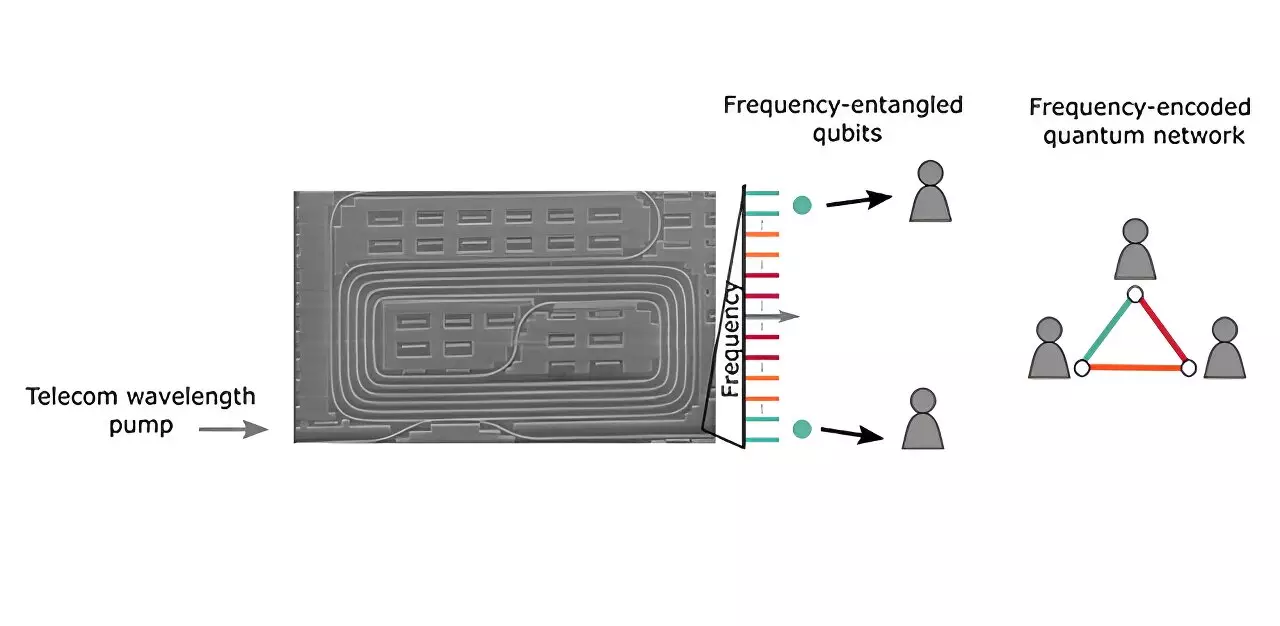The field of quantum technology has taken a significant leap forward with researchers achieving a milestone in harnessing the frequency dimension within integrated photonics. This breakthrough not only promises advancements in quantum computing but also lays the groundwork for ultra-secure communications networks. Integrated photonics, which involves manipulating light within tiny circuits on silicon chips, has long been seen as a promising technology for quantum applications due to its scalability and compatibility with existing telecommunications infrastructure.
In a recent study published in Advanced Photonics, researchers from the Centre for Nanosciences and Nanotechnology (C2N), Télécom Paris, and STMicroelectronics (STM) have surpassed previous limitations by developing silicon ring resonators with a footprint smaller than 0.05 mm2 capable of generating over 70 distinct frequency channels spaced 21 GHz apart. This breakthrough allows for the parallelization and independent control of 34 single qubit-gates using just three standard electro-optic devices. The ability to efficiently generate frequency-bin entangled photon pairs that are readily manipulable is crucial for the development of quantum networks.
The key innovation in this research lies in the ability to exploit narrow frequency separations to create and control quantum states. By using integrated ring resonators, the researchers successfully generated frequency-entangled states through a process known as spontaneous four-wave mixing. This technique allows photons to interact and become entangled, which is essential for building quantum circuits.
What sets this research apart is its practicality and scalability. With the precise control offered by silicon resonators, the researchers demonstrated the simultaneous operation of 34 single qubit-gates using just three off-the-shelf electro-optic devices. This breakthrough enables the creation of complex quantum networks where multiple qubits can be manipulated independently and in parallel. Experimental validation at C2N confirmed the fidelity and coherence of their quantum states, marking a significant step towards practical quantum computing.
The researchers achieved a milestone in networking by establishing what they believe to be the first fully connected five-user quantum network in the frequency domain. This accomplishment opens up new possibilities for quantum communication protocols, which rely on secure transmission of information encoded in quantum states. This research not only demonstrates the power of silicon photonics in advancing quantum technologies but also paves the way for future applications in quantum computing and secure communications.
By harnessing the frequency dimension in integrated photonics, the researchers have unlocked key advantages including scalability, noise resilience, parallelization, and compatibility with existing telecom multiplexing techniques. This research showcases the potential for integrated photonics platforms to revolutionize industries reliant on secure data transmission, offering unprecedented levels of computational power and data security. The future of quantum technology looks bright with the possibilities presented by this groundbreaking research.


Leave a Reply